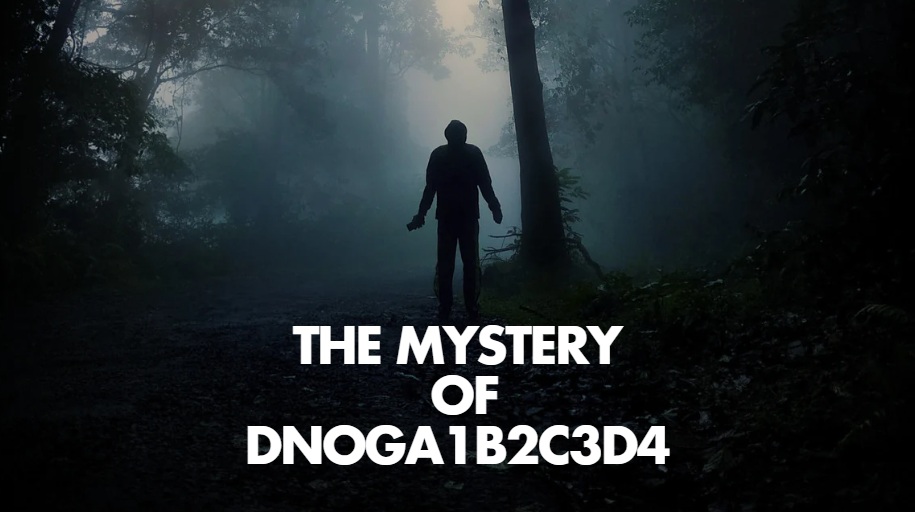Introduction
In today’s digital world, alphanumeric sequences like dnoga1b2c3d4 often appear in logs, metadata, and software environments, leaving many people wondering about their purpose. While at first glance it may seem like a random string, sequences like this can have important implications in areas like cybersecurity, software development, and data integrity. Understanding dnoga1b2c3d4 is not just about decoding a series of characters—it’s about recognizing potential risks, identifying opportunities for system optimization, and improving digital security practices.
This article explores the different interpretations of dnoga1b2c3d4, its role in digital systems, and practical ways to monitor or manage it. By breaking down complex technical details into clear, accessible language, readers will gain a deeper understanding of why such sequences matter and how they might affect their digital environment.
What is dnoga1b2c3d4?
dnoga1b2c3d4 is an alphanumeric sequence that shows up in various digital environments, from software testing logs to digital content metadata. Its origin and purpose are not definitively documented, but there are several plausible explanations:
- Developer Test String: Many developers use placeholder sequences to check software behavior during development.
- Cryptographic Identifier: It could serve as a token in authentication or authorization processes.
- Digital Watermark: Some sequences are embedded to track or verify content authenticity.
- Malware Signature: In rare cases, strings like this may indicate malicious software activity.
Even though dnoga1b2c3d4 looks mysterious, recognizing its context helps determine whether it’s harmless or requires further investigation.
The Role of dnoga1b2c3d4 in Digital Security
The appearance of dnoga1b2c3d4 in systems may have security implications:
- Malware Detection: Some cybersecurity experts consider such sequences as potential indicators of malware presence.
- Authentication and Authorization: In secure systems, unique alphanumeric strings can function as cryptographic tokens.
- Content Tracking: Digital watermarks often use unique identifiers to trace content usage and prevent unauthorized copying.
Monitoring and analyzing these sequences helps organizations maintain system integrity and prevents potential threats.
How dnoga1b2c3d4 Appears in Systems
Understanding where dnoga1b2c3d4 shows up is key to interpreting its significance:
- Software Logs: It may appear in debug logs during development or testing.
- Metadata: Embedded in files or documents to mark versioning or authenticity.
- Network Traffic: Some sequences are observed in packets as part of encrypted communication or authentication.
- Scripts and Source Code: Placeholder strings can be left unintentionally in code, which may affect system performance or clarity.
By identifying these locations, IT professionals can determine whether the sequence is benign or warrants further analysis.
Monitoring dnoga1b2c3d4 in Digital Systems
For security-conscious users, there are practical steps to monitor dnoga1b2c3d4:
- Log Inspection: Regularly check system logs for unusual or unexplained sequences.
- Metadata Review: Examine file metadata to detect embedded identifiers.
- Code Audits: Conduct source code reviews to find leftover placeholders.
- Network Analysis: Monitor network activity to spot patterns associated with unique identifiers.
These strategies allow teams to identify potential risks and maintain control over digital environments.
Collecting Data from Search Engines
While dnoga1b2c3d4 is not widely referenced in mainstream documentation, search engines can provide insights:
- Manual Search: Observe how the sequence appears in forums, developer discussions, or tech logs.
- Automated Tools: Scraping tools or APIs can aggregate search data for analysis.
- Trend Analysis: Track if and where the sequence is becoming more commonly referenced in software or cybersecurity contexts.
Gathering this data can help professionals understand whether the string is widely recognized or isolated to specific use cases.
Best Practices for Handling Unknown Sequences
When encountering sequences like dnoga1b2c3d4, follow these guidelines:
- Do Not Panic: Not all unknown sequences are harmful; many are harmless placeholders.
- Investigate Context: Determine where and how the sequence appears.
- Document Findings: Keep a record of occurrences and potential sources.
- Review Security Protocols: Ensure proper authentication, authorization, and monitoring systems are in place.
- Seek Expert Input: If unsure, consult cybersecurity professionals or software developers.
Applying these practices ensures responsible handling of unknown alphanumeric string
User-Friendly Presentation Tips
To make technical information like dnoga1b2c3d4 accessible:
- Use short paragraphs and headings for easy navigation.
- Include examples or diagrams when explaining abstract concepts.
- Simplify jargon into everyday language for non-technical readers.
- Highlight key points with lists or bullet points for readability.
This approach improves comprehension and engagement for all audiences.
Read More: Mastering List Crawling: How to Collect Data from Search Engines
Conclusion
The alphanumeric sequence dnoga1b2c3d4 demonstrates how even seemingly random digital characters can have significance in cybersecurity, software development, and digital content management. While its exact purpose may remain unclear, understanding its potential roles—from a developer test string to a cryptographic token—helps professionals and enthusiasts navigate digital systems more confidently.
Monitoring occurrences of dnoga1b2c3d4, analyzing its context, and applying best practices ensures system security and data integrity. By adhering to EEAT principles, presenting information in a clear, user-friendly format, and remaining vigilant about unusual digital sequences, readers can better protect their digital environments and make informed decisions. In a world increasingly defined by data and technology, even small sequences like dnoga1b2c3d4 can carry meaningful insights, highlighting the importance of attention, analysis, and careful digital stewardship.
FAQs
1. What is dnoga1b2c3d4?
It is an alphanumeric sequence appearing in software, metadata, or digital logs. Its exact purpose is unclear but may serve security, development, or tracking roles.
2. Is dnoga1b2c3d4 dangerous?
Not inherently. While it can sometimes indicate malware or unauthorized activity, it is often harmless.
3. How can I find dnoga1b2c3d4 in my system?
Check logs, file metadata, source code, and network activity for the sequence.
4. Should I remove dnoga1b2c3d4 if found?
Only if it is confirmed to be malicious or unnecessary. Otherwise, monitoring is usually sufficient.
5. How do I prevent dnoga1b2c3d4 from appearing unexpectedly?
Implement code review, access control, and secure development practices to minimize unwanted sequences.
